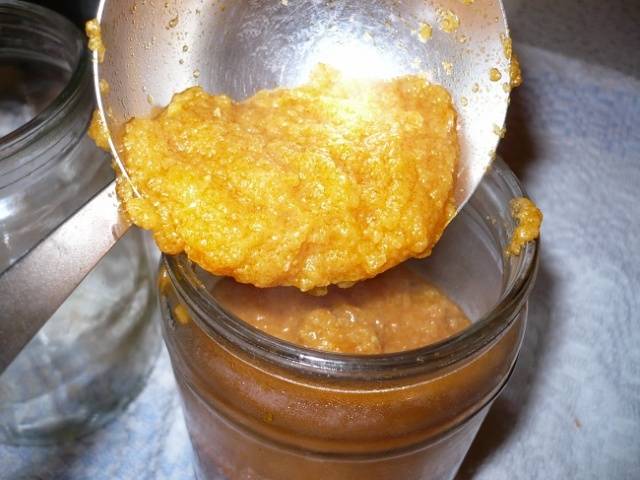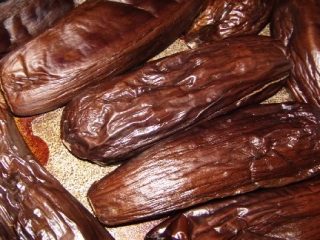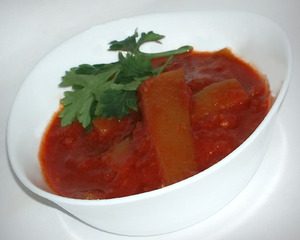Content
Canning is one of the simplest and most affordable ways to prepare vegetables and fruits for long-term storage. Squash caviar It’s easy to prepare for the winter, the ingredients for it are inexpensive, and its benefits have long been known to nutritionists. Fresh or processed zucchini is easily absorbed by the body, contains few calories, but a lot of iron, phosphorus, copper, vitamins, and organic acids. Also, caviar from zucchini will help cope with swelling, improve the functioning of the intestines and gallbladder; it is included in diets for people suffering from hypertension, cardiovascular diseases, or simply wanting to lose excess weight.
There are many recipes for making caviar from zucchini for the winter, they are varied both in taste and in appearance. Perhaps, they are united only by a basic set of products: zucchini, onions, carrots, tomato paste, as well as mandatory heat treatment. At home, this is most often frying and stewing, but there are recipes that require baking zucchini in an oven or even boiling it.
We will bring to your attention three recipes for caviar from zucchini: one is low-calorie, dietary, the other is more nutritious, but incredibly tasty, and the third is for lovers of spicy food. For clarity and convenience, we provide recipes with photos.
Low-calorie squash caviar
This recipe not only contains a minimum of calories, but is also suitable to diversify the diet of people who adhere to strict fasting, since it does not even contain vegetable oil.
Products used
To prepare squash caviar for the winter, you will need:
- peeled zucchini – 1 kg;
- onion – 200 g;
- red tomatoes – 200 g;
- carrots – 200 g;
- table salt – 1 tablespoon;
- black pepper, sugar - to taste (optional).
Cooking caviar
Wash the zucchini well, cut off the spout and stem, and remove damaged areas. Old ones - peel, remove the core, cut into small pieces; young vegetables do not need to be peeled.
Peel the onions and carrots, cut into small cubes.
Place the zucchini, onions and carrots in a saucepan, add a little water, and simmer for 40 minutes.
This recipe for winter squash caviar is prepared with fresh tomatoes. Pour boiling water over them, then immediately place them in cold water. Make a cross-shaped cut at the top, remove the skin, cut the fruit.
When the remaining vegetables are cooked, drain the water, add the cooked tomatoes and use a blender to puree the ingredients.
Place the puree in a thick saucepan, add spices, and simmer over low heat for about half an hour.During this time, the excess liquid will boil away and the mass will become thick.
Transfer the caviar into pre-sterilized half-liter jars. Place them in a wide bowl filled with hot water, cover with lids, and pasteurize for 15 minutes.
Roll up the caviar, turn the jars over, wrap them, and leave until completely cool.
The jars should be stored in a cool place or in the refrigerator. The caviar will be ready for consumption in a month.
Zucchini caviar cooked with mayonnaise
The recipe for squash caviar given below should appeal to housewives who do not like to pasteurize their preparations. True, it is not intended for long-term storage: the jars will have to be emptied before spring. This will not be difficult to do, since this caviar turns out to be so tasty and tender that even those who generally do not like zucchini love it.
Before we tell you how to prepare squash caviar with the addition of mayonnaise, it should be noted that it will not be low-calorie. It includes mayonnaise, which is quite nutritious, as well as citric acid and tomato paste, which can hardly be called dietary products.
Products used
Ingredients:
- zucchini – 5 kg;
- onion – 1 kg;
- mayonnaise – 0.5 l;
- tomato paste – 0.5 l;
- refined oil – 1 cup;
- sugar – 0.5 cups;
- citric acid – 1 teaspoon;
- salt - to taste.
Notes on Product Quality
Additionally, we will give some tips on how to make squash caviar as tasty as possible.
- Use only young zucchini.
- Olive oil doesn't work well in this recipe. Better take sunflower or corn.
- The taste of caviar greatly depends on the tomato paste. It should be tasty, and without bitterness.
- Under no circumstances prepare canned food with mayonnaise that is expired or opened even the day before. Take only fresh product!
- Do not use purple onions - they are, of course, tasty and healthy, but the appearance of the caviar will be unattractive.
- Don't pour salt on your eyes - try it. How much to add depends on the mayonnaise and tomato paste, which may also contain salt.
- This recipe does not contain carrots. If you decide to add it, be sure to reduce the amount of sugar.
Cooking caviar
Before we present the recipe step by step, let us remind you that you need to sterilize the jars and wash the vegetables especially carefully, since there will be no additional pasteurization.
Wash and peel the zucchini, cut.
Cut the onion into half rings and fry in a small amount of refined vegetable oil until transparent.
Grind the vegetables in a meat grinder.
Place them in a saucepan, add oil, mix thoroughly, and simmer for an hour.
Add the remaining ingredients, mix thoroughly so that both the consistency of the caviar and its color are uniform. Simmer for another 40 minutes with constant stirring.
During the cooking process, taste the caviar several times, as its taste will change.
When the caviar is ready and the taste satisfies you, transfer it to sterile half-liter or liter jars and roll up.
Important! Very hot caviar from zucchini should be rolled. The recipe does not require further heat treatment, and it also contains mayonnaise. It is best to place the caviar in jars without removing the pan in which it was cooked from the heat.
The estimated yield of caviar is 4 liters. It is ready for use immediately.
Spicy squash caviar
This recipe for the winter can be called not even squash caviar, but squash adjika. You will have to tinker with the preparation, but the end result will be a very interesting snack.
Products used
Ingredients:
- zucchini – 2 kg;
- onion – 0.5 kg;
- tomatoes – 0.5 kg;
- carrots – 250 g;
- garlic – 1 head (large);
- refined oil – 150 g;
- mustard – 1 tablespoon;
- flour – 2 tablespoons;
- sugar - half a glass;
- vinegar essence – 1 tablespoon;
- salt - to taste.
Quality of products for preparing caviar
This recipe requires pasteurization, and it also contains mustard, garlic, and vinegar essence, which themselves are preservatives.
- Old zucchini will do, you just need to peel it and carefully remove the middle with the large seeds. In this case, you need to weigh already prepared vegetables.
- Take white or golden onions so as not to spoil the appearance of the caviar.
- The mustard should be dry, not cooked.
- The amount of salt, sugar, garlic, vinegar essence can be changed according to your own tastes.
- If necessary, replace tomatoes with tomato paste or even tomato sauce.
Cooking spicy caviar
Rinse the zucchini thoroughly and chop finely.
Peel the tomatoes as described in the first recipe, grind in a blender or using a meat grinder.
Wash the carrots, peel them, grate them, preferably coarse ones.
Cut the onion into cubes, simmer directly in the pan to prepare caviar, add carrots and half the tomatoes. Simmer for 30 minutes without a lid.
Add chopped zucchini and salt. Cover the dish with a lid and cook for another 40 minutes over low heat.
Remove the lid and let simmer for another 40 minutes until the mixture thickens.
Mix the remaining tomato puree with flour and mustard until smooth.
Add sugar and chopped garlic.
Pour the mixture into boiling vegetables, mix thoroughly, and keep on low heat for another 20 minutes. Don't forget to stir.
Turn off the heat, cool the mass a little, add vinegar essence, grind with a blender or other method.
Place the finished caviar in clean half-liter jars and sterilize for 15 minutes.
Turn over, wrap, leave until cool.
Conclusion
As you can see, squash caviar can be prepared in various ways. It can be a dietary dish, a snack, or simply a delicious delicacy. Choose the recipe that you like best. Bon appetit!





























